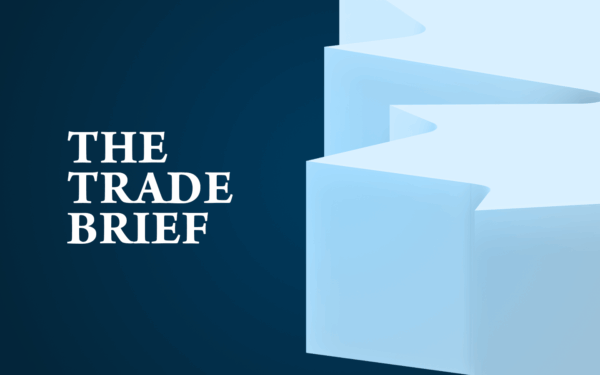Now is the winter of Canada’s economic reckoning
As published in The Globe and Mail
The events of recent weeks may have finally shattered Canada’s economic complacency. U.S. President Donald Trump’s imminent disruptive trade agenda has sent shock waves through our political class, fuelling anxiety across the country.
This external threat should also force a long-overdue reckoning with Canada’s deeper, self-inflicted economic vulnerabilities. The crisis we face is not just about U.S. tariffs; it is about the fragility of our economic foundations and the urgent need to act decisively to rebuild them.
Shifting political economy alliances and the pressing challenge of demographic pressures are unforgiving realities we must confront. Persistent domestic challenges – low innovation, stagnant productivity and declining competitiveness – have left Canada ill-prepared to navigate this moment.
Real gross domestic product per capita has now declined in eight of the past nine quarters, retreating to levels last seen in 2017. To return to its pre-pandemic trajectory over the next decade, GDP per capita would need to grow at an average annual rate of 1.7 per cent, a marked departure from current trends.
Productivity growth is a cornerstone of economic health, but it has averaged just 0.8 per cent annually over the past two decades, compared to 2 per cent in the United States. Intellectual property products investment per Canadian worker provides sobering examples. In 2008, Canadian business spending on these products was about $2,000 per available worker, compared with about $4,000 in the U.S. In 2023, the Canadian figure had crept up to about $3,000, while the U.S. figure soared to more than $10,000.
So, it’s 30 cents versus $1.
Canada is in an economic emergency. Rather than being paralyzed by external pressures, we must focus on what we have the agency to control: a long-term economic growth agenda which will build resilience from within.
History offers powerful lessons on how existential threats can drive transformation. In 1957, the Soviet Union’s launch of Sputnik – the world’s first satellite – exposed the U.S.’s technological vulnerabilities, spurring swift and decisive action. Washington’s creation of the Defense Advanced Research Projects Agency (DARPA), paired with massive investments in science and technology, repositioned the U.S. as a global leader in aerospace, computing and communications. DARPA’s innovations – GPS, the internet and more – became the backbone of U.S. economic and technological dominance.
The Netherlands faced a similar reckoning at the end of the Second World War. The Dutch Hunger Winter of 1944-45 revealed the fragility of the nation’s food systems, prompting a transformative response. Strategic investments in agricultural research, sustainable practices and public-private partnerships turned the Netherlands into a world leader in agricultural innovation. Today, despite its small size, the country exports more than €100-billion (more than $149-billion) in agricultural goods annually.
Israel provides yet another example of necessity-driven innovation. Surrounded by hostile neighbours and limited natural resources, Israel embraced a culture of ingenuity, investing strategically in defence, water management and cybersecurity. Israel’s high-tech industry now accounts for nearly 15 per cent of GDP and more than 40 per cent of exports, demonstrating how existential threats can inspire world-class innovation.
Canada now stands at its own crossroads. The external pressures from protectionist U.S. policies, combined with internal stagnation, demand an urgent and commensurate response. This moment must be used to focus on our country’s engines of growth.
For decades, Canadian policy-makers have been warned about structural issues that are holding us back, such as interprovincial trade barriers, regulatory gridlocks and tax competitiveness. Yet little progress has been made.
Competing in advanced industries – including biotechnology, aerospace, energy technology, cleantech and advanced manufacturing – is critical for modern economies. These sectors are key drivers of innovation and productivity, fuelling economic growth and creating high-wage, future-oriented jobs. Yet Canada’s current science and technology ecosystem is not delivering innovation at the pace of its global peers.
For Canada to catch up, it must focus on creating mechanisms that translate its public research and development investment in intellectual capital into private-sector innovation. This requires building institutions between the public and private sectors to bridge the gap between discovery and commercialization.
As U.S. economist Alex Tabarrok recently noted, “Canada’s best chance to stay at the forefront of technology lies in exploiting its comparative advantage. Artificial intelligence offers the potential to dramatically increase the rate at which profitable mines are discovered, while industrial robotics and automation represent the future of mining. Similarly, agriculture is becoming a high-tech industry, integrating advances such as genetic engineering, robotic laser weeding, and satellite-based crop monitoring.”
Canada’s comparative advantages are not limited to mining and agriculture. We have huge upside potential in advanced materials, energy technologies (including nuclear) and biotechnology.
As history shows, resilience and innovation often emerge not from comfort but from necessity and emergency. This is Canada’s Sputnik moment, its Hunger Winter, and its test of ingenuity and resolve. If we do not take responsibility for addressing our structural economic weaknesses, who will? And if we do not act decisively in this moment of economic emergency, when will we?










